
The concept of functional foods is becoming more widespread. The good news for formulators is that consumers are getting the message that some food components and ingredients promote health. The really exciting news is that dairy foods are viewed as a leading vehicle for delivering these functional components. Everything from fiber and plant sterols to omega-3 fatty acids and probiotic cultures, dairy foods can deliver these ingredients to consumers, who at the same time can also get a healthful dose of everything milk inherently has to offer: vitamins, minerals, whey proteins, etc.
Making headlines
The December 28 issue of theNew York Timesreported a story of a 43-year-old woman who, ever since giving birth to her fourth child in 2003, has suffered from annoying bouts of constipation. Figuring it was the stress of carting three children around or the result of something that had changed in her body after pregnancy; she learned to live with it. Then a new dairy product entered the U.S. marketplace, and this woman's intestinal health was about to change (more on this later).The good news is that U.S. consumers, who for long preferred to pop a pill to treat an ailment, appear to now be seeking out more natural solutions. ThatNew York Timesarticle says that "marketing surveys also show that more Americans are interested in natural solutions to health issues."
"People are getting nervous about pharmaceuticals," famous trend forecaster Faith Popcorn told the New York Times. "If it's food, people trust it more. And people are also so happy to hear that something they love to eat is also good for them." Popcorn cites the Vioxx® situation-in which millions of pain sufferers were told that the anti-inflammatory drugs they were taking might increase their risk of heart attacks-and the high price of drugs as factors spurring consumers to seek out drug-free remedies.
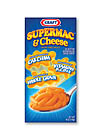
When something you love to eat delivers extra good stuff, it's an incentive to buy.
Consumers get it
According to an online survey conducted by Cogent Research, Cambridge, Mass., for the Washington, D.C.-based International Food Information Council (IFIC) Foundation, 58% of consumers rate omega-3 fatty acids as "somewhat or extremely healthful." The same survey found that 87% of consumers believe the same of fiber.Conducted in November 2005, the survey included responses from 1,060 Americans ages 18 or older. This sample, described as being reflective of the U.S. population based on key demographic variables-having Internet access being an important one-indicates that 75% of Americans are trying to consume more fiber and whole grains and about one-half said they are trying to consume more omega-3 fatty acids.
"Consumers told us that they are acting upon the advice to consume more fiber, whole grains and healthful dietary fats as a part of a balanced diet," says Susan Borra, president of IFIC and past president of the American Dietetic Association (ADA), Chicago. "Consumers also are becoming more aware of the role that certain foods or food components may have in promoting health and reducing the risk of disease."

Consumers have really embraced the health benefits associated with consuming omega-3s, and appear to be very open to consuming foods fortified with these fatty acids. In fact, 78% recognize that omega-3s may reduce the risk for heart disease.
Here's some long-awaited consumer recognition: nearly half of the respondents recognize that the prebiotics and probiotics found in some fortified foods, such as yogurt and dairy beverages, may aid in digestive health.
"Now more than ever, we know that food impacts health and consumers want to put this advice into practice," says Borra. "But we need to remember that it is not one component or one food that reduces the risk of disease or makes a person lose or gain weight. It's the totality of the diet-combined with physical activity that has the greatest benefit to health."
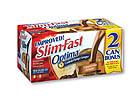
New satiety-formulated foods and beverages are using ingredients that have been shown to make one feel full longer.
Ingredients to pursue
Consumers are starting to embrace the concept of balance in their food and beverage choices, much like they are trying to achieve harmony in their day-to-day lives. Today's new foods provide one or more of the following attributes: energy, satiety, functional nutrition, portion control and convenience. The latter two tend to go hand-in-hand, and are more a role of the package and package size than the formulation. The other three attributes, however, are dependent on formulation, specifically ingredients that add value to the product in terms of providing the consumer . . . you guessed it, energy, satiety and specific health benefits.Functional nutrition is a broad topic, and covers many ingredient categories. It is also a trend that has been growing during the past five years or so. It's the two other traits-energy and satiety-that have only recently entered the marketplace. And, based on consumer trends, these features in foods and beverages will be sticking around for some time.
What are those consumer trends? Mainly, it is our hectic lifestyles that have Americans looking for foods and beverages that provide them energy-and also fill them up, because after all, we are in the midst of an obesity epidemic.
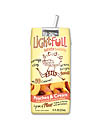
Functional nutrition is a broad topic, and covers many ingredient categories. It is also a trend that has been growing during the past five years or so. It's the two other traits-energy and satiety-that have only recently entered the marketplace. And, based on consumer trends, these features in foods and beverages will be sticking around for some time.
What are those consumer trends? Mainly, it is our hectic lifestyles that have Americans looking for foods and beverages that provide them energy-and also fill them up, because after all, we are in the midst of an obesity epidemic.

This is an opportunity dairy beverage manufacturers need to tap into, too. There are a few dairy-based energy drinks currently in the marketplace. Most of them also claim to provide satiety.
Satiety is the state of being full or gratified to the point of satisfaction. Scientific studies indicate that satiety is dependant on not only how much food you eat, but what type of food you eat as well. Satiety is being addressed on food labels with synonymous terms such as "hearty" and "controls or reduces hunger."
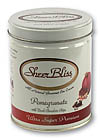
The health benefits associated with pomegranate and dark cocoa transfer to products made with these antioxidants.
The ileal brake mechanism is an important regulator of gastrointestinal function. Unabsorbed nutrients in the ileum, which is the final section of the small intestine, inhibit gastric emptying, providing a sense of satiety. Fat, in particular, penetrates the ileum when a person has eaten too much for the body to process. When this happens the ileum triggers a "full" message to the brain.
That full message is the result of the secretion of cholecystokinin (CCK), a peptide hormone of the gastrointestinal system responsible for stimulating the digestion of fat and protein. It is secreted by the duodenum, the first segment of the small intestine, and causes the release of digestive enzymes and bile from the pancreas and gall bladder, respectively.
Scientists are experimenting with ways to delay gastric emptying to prolong the sensation of fullness. They are also exploring ways to trick the ileum into thinking it is full, and thus helping dieters stop before reaching for a second helping.

Standards of identity prevent GoodBody from being called ice cream. Formulating outside the standards presents a great deal of opportunity for marketers pursuing the functional foods consumers.
If there was only a way to get fat into the ileum-not extra fat, just a healthy dose-than one could trick the body into feeling full. Well, that's what scientists at U.K.-based Unilever have done. After more than four years of research, Unilever scientists found a way to alter the structure and the coating of fat molecules so that they remain intact as they pass through the digestive system and trigger a sated response when they hit the ileum.
This technology is being applied to a new and improved line of SlimFast® Optima® products. Packages carry the tag line: Controls Hunger Longer. The shakes make the promise to keep dieters full for four hours, up from the two and a half hours of a regular SlimFast shake. In addition to proprietary-processed fat molecules, the shakes also use fat-free milk as the base material. Milk, of course, is loaded with satiety-contributing protein.

Fiber ingredient suppliers, too, are touting some of their products for satiety value. For example, research shows consumers on diets supplemented with inulin and oligofructose report higher levels of satiety, longer feelings of fullness and lower calorie intake, which can all assist with weight loss.
Research also shows that foods high in fiber and protein slow digestion and extend the release of CCK.
With knowledge of this relationship between fiber, protein and satiety, LightFull Foods, Mill Valley, Calif., has created a convenient, nutritious and delicious snack for women on the go that is said to help them feel full and thus prevent unhealthful snacking between meals. The beverage is the LightFull Satiety Smoothie™, which contains only 70-90 calories, depending on variety, but is packed with 6g of protein and 6g of fiber.
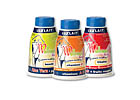
Aloe vera is used overseas as a beauty enhancer, while ginseng, ginkgo, green tea and guarana are linked with energy.
Brewed coffee and milk are the first and second ingredients in Frappio. The company relies on caffeine and a patented herbal extract to make its label claims. The latter is based on ashwagandha, which comes from the plantWithania somnifera. The claims associated with ashwagandha are regulated by the Dietary Supplement Health and Education Act (DSHEA) where it is recognized as a performance and endurance enhancer.
Indeed, milk is the most well-positioned base material for many of the satiety- and energy-producing beverages currently in developmental stage. Milk has not only its healthful halo, but also the dairy calcium and dairy protein linked with lean muscle development and fat loss.
Clinical research presented in early April at the Experimental Biology meeting in San Francisco by USDA researchers found that individuals who consumed supplemental whey protein for six months weighed less and had less body fat compared to individuals who consumed a carbohydrate supplement. In addition, the whey protein group had a smaller waist circumference than both the soy and carbohydrate supplemented groups.
"The findings of this study add to our knowledge about the health benefits of whey protein," says David Baer, one of the researchers. "It's noteworthy that people who consumed whey protein daily, without any additional exercise or caloric restriction, still had a smaller waist circumference at the end of the study compared to the other groups."
"While research is still emerging on this topic, the results of this study support existing research suggesting that whey protein may improve body composition by preserving lean body mass and promoting fat loss," says Joseph O'Donnell, executive director of the California Dairy Research Foundation (CDRF) and chairman of the U.S. Whey Protein Research Consortium.
Whey protein is a high-quality dairy protein derived from milk that contains all nine essential amino acids, the building blocks of healthy muscles, skin, nails and other body tissues. Whey is also a rich source of branched chain amino acids (BCAAs) that help regulate muscle protein synthesis.
An equipment supplier has identified a process to convert whey proteins into a high-value concentrate that can be used to replace fat in lower-fat dairy product formulations. At the same time the ingredient lowers fat and calorie content, it is boosting the whey protein content, which, as mentioned, has been shown to contribute to satiety.
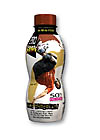
Extra protein from whey is associated with energy and endurance.
The time is right
Remember that constipated woman at the outset of our story? Well, when The Dannon Co., White Plains, N.Y., asked her to participate in a two-week trial for Activia™, a yogurt that the company says could help speed up intestinal transit time, and thus reduce constipation, she jumped at the chance. Dannon, the American division of the French company Group Danone, is counting on more people trying out Activia and benefiting from the billions of Bifidus Regularis™ cultures each 4-oz cup contains.Studies on the intestinal transit time have shown the effectiveness of Activia when it is consumed on a daily basis for two weeks. These same studies have also demonstrated that the amount consumed by the study participant influenced the results, with greater effectiveness when up to three 4-oz portions a day were consumed. However, Dannon does say that beneficial effects will start appearing after two weeks of eating at least one 4-ounce container of Activia each day.
It appears that the time is finally right to sell Americans on the benefits of probiotic cultures. In fact, since Activia's debut at the beginning of the year, other cultured dairy marketers have rolled out products flagging the addition of probiotics.
Harvey Hartman, chief executive of the Hartman Group, a Seattle consulting firm, says that health claims for certain foods or beverages, such as "juice, yogurt, cereal, bars, these things make sense. They're already perceived as being relatively healthy."
This is a reason why yogurt is an ideal functional food concept. Juan Carlos Dalto, chief executive of Dannon, told the New York Times, "Yogurt is already perceived as a health product and most people realize that it already has bacterial cultures. With Activia, we're just adding a specific strain that offers a specific benefit."
Dairy foods are the ideal delivery vehicle for probiotics for numerous reasons. For starters, while the concept of consuming bacteria has traditionally not been appealing to Americans, many are starting to recognize that live, active cultures present in fermented dairy foods can be good for their health. In addition, the fact that dairy products containing live, active cultures must be refrigerated ensures that the probiotics have not been sitting around for a year or so, like they may be in the supplement aisle. Short time and low storage temperatures promote probiotic stability and assist with maintaining viable counts.
Viable counts delivered to the gastrointestinal tract are key to the functionality of probiotics. The high levels of stomach acids and bile in the small intestine can kill many types of probiotics. The good news is that dairy products buffer this high acidic environment, creating a more favorable environment for probiotic survival.
Truthful and believable condition-specific applications are key to the success of all of these functional ingredients. The fact is that health and wellness is more than a trend. It is a standard. Aside from the occasional Twinkie™ or bag of Cheetoes™, consumers have come to expect the foods and beverages that they buy and eat provide them some positive nutritional value.
R&D Checklist
Order samples of:- Dark cocoa
- Fiber
- Omega-3s
- Plant extracts
- Plant sterols
- Pomegranate
- Prebiotics
- Probiotics
- Whey proteins

Sidebar:
Dairy products fortified with omega-3 fatty acids are very popular else where in the world. Since two of the most beneficial omega-3 fatty acids-EPA (eicosapentaenoic acid) and DHA (docosahexaenoic acid)-were approved for use in U.S. infant formula about four years ago, formulators have been exploring other applications including fluid milk, yogurt and cheese. These products started rolling out at the end of 2005.Sidebar: A Heart-Healthy Opportunity
All types of foods are being formulated with plant sterols, including dairy; it's easy to doWith the functional food market abuzz about the heart-health benefits of plant sterols, dairy foods formulators often ask about the ease of use of plant sterols, as well as their range of applications. Fortunately, both questions have extremely positive answers.
Plant sterols are relatively easy to formulate into existing dairy applications, and sterols are available in different forms to aid in the ease of processing. In addition, modern dairy manufacturing equipment is already outfitted for sterol use, so manufacturers need not extend extra capital to boost their products' benefits.
Likewise, plant sterols can be used in virtually any dairy application. If included in the amounts specified by an FDA health claim, plant sterols also enhance a finished dairy product's nutritional profile without altering its flavor or texture. The qualified claim states that foods containing at least 0.4g per serving of plant sterols, eaten twice a day with meals for a daily total intake of at least 0.8g, as part of a diet low in saturated fat and cholesterol, may reduce the risk of heart disease.
Plant sterols can help lower serum low-density lipoprotein (LDL)-or bad-cholesterol levels, which are well recognized as impacting heart disease risk. Presently, the National Institute of Health, through the National Cholesterol Education Program, suggests that Americans consider plant sterols as a therapeutic lifestyle change for reducing cholesterol. And, a 2003 review published in Mayo Clinic proceedings states that eating foods low in saturated fat and cholesterol and high in sterols can reduce LDL cholesterol by 20%. Plant sterols provide an effective, dietary method for countering elevated cholesterol, a crisis facing 105 million Americans.
For dairy foods to utilize the FDA claim, they must meet requirements for low saturated fat and low cholesterol, and they must contain no more than 13g of total fat and meet saturated fat and cholesterol requirements. Low- or reduced-fat dairy foods are perfect applications for plant sterols.
Furthermore, ADM recently received a no objection letter from FDA, expanding the GRAS categories for its CardioAid™ plant sterols to include cheese and cream, yogurt, and milk-type products, including processed soups, puddings, soymilk, ice cream and ice cream substitutes.
This article was contributed by Lisa Scott, Soy Foods Technologist II at Archer Daniels Midland Co., Decatur, Ill. She can be reached as 217/451-8633, or L_Scott@admworld.com.